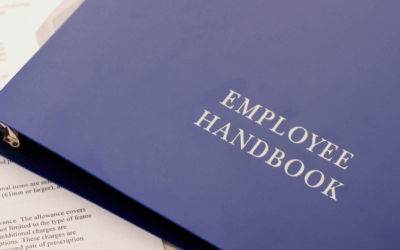HR operations is the engine room of HR—the practical work that keeps people programs running day in, day out. It’s the team and tools that handle onboarding and offboarding, payroll and benefits, policies and compliance, data and systems, and the countless handoffs that support every stage of the employee lifecycle. If you’re asking “what is HR operations,” think of it as translating people strategy into repeatable processes that are accurate, compliant, and scalable—so leaders can focus on growth while employees get a consistent, trusted experience.
In this guide, we’ll define HR operations in plain terms and show where it fits alongside HR management, HR business partners, and people operations. You’ll get a clear view of core responsibilities, daily tasks, roles and org structure, must‑have skills, career paths and salary ranges, goals and KPIs, and the tech stack (HRIS, ATS, payroll, workflows) that makes it work. We’ll also cover compliance essentials for SMBs, how HR ops evolves as you scale, playbooks to build or optimize your function, when to outsource, and pitfalls to avoid. Let’s start with the scope at a glance.
What HR operations covers (scope at a glance)
HR operations covers the day-to-day mechanics that make HR reliable and compliant. It spans the entire employee lifecycle and the systems, data, and guardrails that support it.
- Payroll and benefits: administration and accuracy
- HRIS and data: integrity, access, and reporting
- Compliance: labor laws and internal policies
- Recruiting support: workforce planning and coordination
- Onboarding and offboarding: standardized workflows
- Employee relations: conflict resolution and guidance
- Health & safety: programs and incident reporting
- Training & performance: coordination and tracking
- Process optimization: automation and continuous improvement
HR operations vs. HR management, HRBP, and people operations
If HR management sets the playbook, HR operations runs it. HR ops handles the practical, day‑to‑day execution—payroll, HRIS, compliance, onboarding/offboarding—so strategy turns into consistent outcomes. HR business partners (HRBPs) sit with the business to align talent plans to objectives, while people operations in some companies focuses on the employee experience and programs that drive engagement. In smaller orgs, one person may wear multiple hats; the distinctions help you assign ownership as you scale.
- HR operations: Runs the engine—processes, systems, data integrity, compliance, SLAs, and issue resolution.
- HR management: Sets policies and programs—performance, L&D, compensation/benefits, succession, and workforce planning.
- HRBP: Advises leaders—org design, change enablement, talent planning—using insights and capacity from HR ops.
- People operations: Designs the experience—engagement, culture, communications, recognition—partnering with ops to operationalize.
With roles clear, here’s what HR operations actually owns day to day.
Core responsibilities and processes
At its core, HR operations turns policy into dependable processes that scale. The function owns the “how” of HR—standardizing workflows, setting SLAs, safeguarding data, and keeping the organization compliant—while partnering with HR leaders to implement programs. Here are the core responsibilities most SMBs should expect HR ops to run.
- Payroll & benefits: Accurate, on-time pay, enrollments, reconciliations, vendor liaison.
- HRIS & data: Clean records, access controls, audits, reports, dashboards.
- Compliance & policy: Labor-law alignment, documentation, audits, notices, risk mitigation.
- Recruiting & workforce planning: Headcount tracking, requisitions, offers, ATS coordination.
- Onboarding & offboarding: Checklists, provisioning/deprovisioning, forms, knowledge transfer, exits.
- Employee relations: Intake and triage, investigations, documentation, manager coaching.
- Health, safety & leave: Safety programs, incident reporting, OSHA, FMLA/state leave.
- Performance & learning: Cycle orchestration, training logistics, completions, recordkeeping.
- Process & tech optimization: Automation, integrations, SLAs, metrics, continuous improvement.
Done well, these processes reduce errors, speed cycle times, and create a consistent employee experience leaders can trust.
Day-to-day HR operations tasks across the employee lifecycle
Great HR operations show up in the small, repeatable moments that keep work moving and risk low. From the first headcount request to the final paycheck, ops runs the checklists, systems, and handoffs that create a consistent employee experience and free leaders from fires.
- Workforce planning & requisitions: Maintain headcount plans, open reqs in the ATS, coordinate interviews, offers, and pre-employment checks.
- Onboarding execution: Collect new-hire paperwork, trigger provisioning, enroll benefits, schedule orientation, and confirm day-1 readiness.
- Payroll & benefits admin: Close time, process changes and deductions, manage enrollments/qualifying life events, and reconcile with vendors.
- HRIS & records: Maintain accurate employee data, access controls, org changes, and routine audits and reports.
- Compliance & policy: Monitor labor-law updates, maintain documentation, manage notices, and align processes to internal policies.
- Employee relations support: Intake and triage issues, coach managers, document findings, and track resolutions.
- Performance & learning cycles: Launch reviews, send reminders, track completions, log training, and retain records.
- Health, safety & leave: Coordinate FMLA/state leaves, track accommodations, schedule safety trainings, and file incident reports.
- Offboarding: Collect assets, deprovision access, notify payroll/benefits, prepare final pay and documents, and conduct exit interviews.
- Reporting & insights: Produce headcount, turnover, and compliance dashboards to guide decisions and improvements.
Key roles in HR operations and typical org structure
As companies grow, HR operations shifts from “one person doing everything” to a centralized, service-delivery team. Early on, a generalist or HR lead runs the basics. With scale, an HR Operations Manager builds repeatable workflows, adds specialists for payroll/benefits and onboarding/offboarding, and brings in analytics to drive decisions.
- HR Operations Manager: Oversees daily HR processes end-to-end, ensures compliance and data accuracy, manages HRIS and SLAs, and leads the ops team.
- HR Operations Specialist: Executes lifecycle workflows, coordinates payroll/benefits changes, administers policies, and identifies process improvements.
- HR Operations Analyst: Produces reports and dashboards, audits HR data, and recommends efficiency and automation opportunities.
- HRIS/HR tech Administrator: Implements and maintains HR systems (HRIS, ATS), integrations, permissions, and data quality.
- Payroll & Benefits Administrator: Runs accurate, on-time payroll, manages enrollments and qualifying events, and reconciles with carriers/vendors.
- Employee Relations Specialist: Triages issues, documents investigations, and supports managers in applying policy.
In larger organizations, an HR Operations Director sets strategy while HR ops runs as a shared service partnering with HRBPs and business units.
Essential skills and competencies for HR operations
HR operations is a contact sport: you need precision with data, calm under pressure, and empathy for employees while guarding compliance. The best HR ops pros translate policy into practical workflows, use HR tech to remove friction, and turn metrics into decisions that improve accuracy, speed, and the employee experience.
- HR technology proficiency: HRIS, ATS, payroll, and integrations
- Data quality and analytics: audits, reporting, dashboards, insight translation
- Compliance and policy literacy: labor laws, documentation, audits
- Process design & improvement: SOPs, SLAs, automation, continuous optimization
- Payroll & benefits mastery: accuracy, enrollments, reconciliations, vendor liaison
- Employee relations & conflict management: fair process, documentation, manager coaching
- Health, safety & leave casework: training, incident reporting, FMLA/state leave
- Clear, service-minded communication: cross-functional coordination and expectation-setting
- Discretion and trust-building: sound judgment and confidentiality under pressure
These competencies keep HR operations focused on outcomes: compliant, repeatable processes that scale.
Career paths and salary benchmarks
HR operations offers clear upward mobility. Early‑career specialists and analysts can grow into HR Operations Manager, and from there into Talent Manager, HR Manager, Shared Services Manager, HR Director, or even Chief People Officer. Pay varies by company size and location; US benchmarks below illustrate the spread.
- HR Operations Analyst: ~$64,300 average (US)
- HR Operations Specialist: ~$73,800 average (US)
- HR Operations Manager: ~$68K–$116K typical; some sources report ~$123K average in larger orgs, with top end near ~$164K (US)
Goals, KPIs, and success metrics
HR operations wins when work runs quietly—accurate, on time, compliant—and the employee experience is consistent. The big goals align to efficiency and accuracy, airtight compliance, strong employee relations, and scalability as you grow. Track a compact, visible dashboard so leaders can see progress and spot risks early.
- Efficiency & accuracy: Payroll accuracy %, first-time-right rate, median cycle time for hires/onboarding/offboarding.
- Compliance: Audit pass rate, policy acknowledgment completion %, on‑time regulatory filings/notices %.
- Data quality: HRIS error rate, duplicate records, data fixes closed per month.
- Employee experience: Onboarding completion %, 30/60/90‑day new‑hire retention, ER case resolution time.
- Recruiting support: Time‑to‑fill, offer acceptance rate, background/pre‑employment check timeliness.
- Benefits: Enrollment accuracy %, QLE processing time, vendor reconciliation variances.
- Leave & safety: On‑time leave determinations %, incident rate, corrective actions closed on schedule.
- Cost & scale: HR‑to‑employee ratio, cost per employee for HR ops, self‑service adoption %.
- Retention: Voluntary turnover %, top exit themes actioned.
The HR tech stack for operations (HRIS, ATS, payroll, workflows)
HR operations runs on a connected stack that automates repetitive work, protects data, and gives employees self-service. The HRIS is your system of record; everything else should feed it cleanly. Aim for tools that integrate via APIs, support compliance, and provide clear dashboards for decisions.
- HRIS (system of record): Core employee data, org structure, comp, documents, role-based access, audits.
- ATS (hiring): Reqs, interviews, offers, pre-employment checks; auto-create new-hire records in HRIS.
- Payroll & benefits: Accurate pay, taxes, deductions, enrollments; two-way sync with HRIS; reconciliation.
- Time & attendance: Hours, PTO/leave balances; feeds payroll and compliance reporting.
- Case management/ER: Issue intake, documentation, workflows, and timestamps for a defensible audit trail.
- Workflow automation: Onboarding/offboarding checklists, approvals, provisioning, reminders, SLAs, escalations.
- Self-service portals: Profile updates, time off, pay/benefits info, forms—reduces tickets and errors.
- Analytics & reporting: Standard dashboards for headcount, turnover, DEI, compliance, and cycle times.
- Integrations & security: SSO, APIs/iPaaS, least-privilege permissions, logs, and retention controls.
Choose suite or best-of-breed based on usability, compliance needs, scalability, and admin effort.
Compliance and risk management essentials for SMBs
Compliance is where SMBs can’t afford guesswork. HR operations builds the guardrails that keep you aligned with labor laws, protect people, and reduce legal exposure—while creating a clean, defensible record if questions arise. The essentials are simple: accurate data, standardized processes, consistent documentation, and timely actions across hiring, pay, leave, and safety.
- Policy and documentation: Standardize policies and handbooks; maintain signed acknowledgments.
- HRIS data governance: Accurate records, role-based access, periodic audits and corrections.
- Pre-employment checks and hiring: Follow lawful checks; document eligibility and decisions.
- Leave, health, and safety: Manage FMLA/state leave; OSHA training and incident reporting.
- Payroll and benefits: Timely, accurate processing; reconcile enrollments with carriers regularly.
- Case management: Document ER investigations, resolutions, and corrective actions consistently.
How HR operations evolves as your company scales
As you grow, HR operations moves from heroic effort to disciplined, tech-enabled service delivery. Early on, a generalist keeps the lights on. With more people and locations, the work demands standardized workflows, a reliable HRIS, tighter compliance, and clear SLAs. At larger scale, HR operations becomes a shared service with specialists, automation, and analytics that inform leaders and prevent risk—so the employee experience stays consistent even as complexity rises.
- Early stage: A generalist manages onboarding, payroll, basic policies; adopt a simple HRIS/payroll and document core processes.
- Growth stage: Add an HR Operations Manager; standardize SOPs and checklists, implement an ATS, and clean up data and permissions.
- Multi‑site stage: Specialize (payroll/benefits, HRIS, ER); formalize case management, leave and safety programs, and recurring reporting.
- Scale stage: Run a shared-services model with self‑service, workflow automation, API integrations, role‑based access, audits, and KPI dashboards.
Building or optimizing your HR operations function (playbooks and operating model)
Building or optimizing HR operations means codifying how work flows, who owns what, and the standards that keep delivery consistent. Choose an operating model that matches your stage, then capture the “how” in lean playbooks so teams, managers, and systems execute the same way every time. With what is HR operations rooted in process and tech, your aim is a predictable, auditable engine that scales.
- Assess the current state: Map the employee lifecycle, surface pain points, risks, and data-quality gaps.
- Choose an operating model: Centralized shared services with tiered support (Tier 0 self‑service, Tier 1 intake, Tier 2 specialists) aligned to HRBPs/COEs.
- Build practical playbooks: SOPs, checklists, RACIs, templates, and decision trees (ER, leave) with legal‑approved language.
- Wire up tech + automation: HRIS as source of truth; integrate ATS/payroll; automate onboarding/offboarding and approvals; enable self‑service.
- Set controls and SLAs: Cycle times, quality checks, access/permissions, documentation standards, and change control.
- Instrument metrics and improve: Dashboards for accuracy, speed, compliance; run retros and quarterly process reviews.
- Enable the business: Train managers, publish a knowledge base, and keep guidance concise and searchable.
When growing companies should outsource HR operations (and what to look for)
Outsourcing HR operations makes sense when admin work crowds out strategy, compliance risk rises, or you’re scaling without mature systems. It’s also a smart bridge during leadership gaps, multi‑site expansion, or when ER, payroll, and benefits errors start showing up.
- Full lifecycle coverage: Payroll, benefits, HRIS, onboarding/offboarding.
- Compliance expertise: Clear policies, audits, multi‑state know‑how.
- Proven HR tech: HRIS/ATS/payroll integrations and automation.
- Data security: Role‑based access, logs, retention controls.
- SLAs and KPIs: Measurable accuracy, speed, and service levels.
- Scalability: Tiered support, playbooks, repeatable workflows.
- Manager enablement: Training, knowledge base, clear guidance.
- Culture fit: Practical, proactive, and aligned to your industry.
Common pitfalls to avoid
Even strong HR teams trip over basics when growth accelerates. Most failures aren’t strategic—they’re operational: messy data, manual handoffs, and unclear ownership that invite errors and risk. Avoid these pitfalls to keep HR operations accurate, compliant, and ready to scale.
- Lack of standardization: No SOPs; inconsistent onboarding/offboarding.
- Dirty HRIS data: Duplicates, bad permissions, no audits.
- Manual, siloed tools: Spreadsheets/email instead of integrations.
- Weak compliance hygiene: Late notices, poor documentation.
- No SLAs or metrics: Blind to accuracy and cycle times.
Quick FAQ about HR operations
Here are straight‑shooting answers to the questions leaders ask most about what is HR operations. Use this cheat sheet to confirm who owns what, close process and compliance gaps, and decide whether to build in‑house or bring in outside help for speed and scale.
- What is HR operations? Day‑to‑day engine: payroll, HRIS, compliance, onboarding/offboarding.
- How is it different? Ops executes; HR management sets policy; HRBP advises.
- When formalize? When admin crowds out strategy or risk rises.
- Essential tools? HRIS, ATS, payroll, time, self‑service, automation.
- Measure success? Accuracy, timeliness, audits, cycle times, experience.
Putting HR operations to work
When HR operations hum, the noise stops: pay is right, onboarding is smooth, issues are handled, and leaders have clean data to make decisions. Start by clarifying ownership, standardizing the lifecycle with simple SOPs, and cleaning your HRIS. Automate high-volume handoffs (onboarding/offboarding, payroll changes, leave), set SLAs, and track a small KPI set for accuracy, speed, and compliance. Then enable managers with a searchable knowledge base and self‑service so the process sticks as you grow.
If you’re short on time—or want a safer, faster path—bring in a partner that can stand up the engine while you focus on the business. Talk with Soteria HR about an HR ops tune‑up or an outsourced model that delivers compliant, repeatable results without adding headcount.




